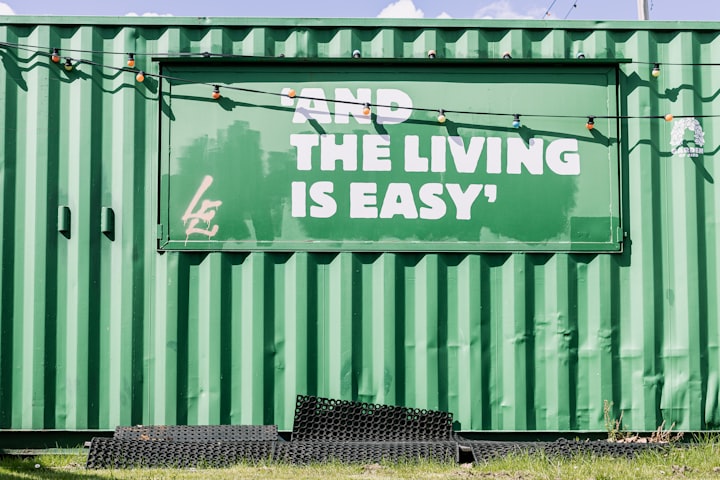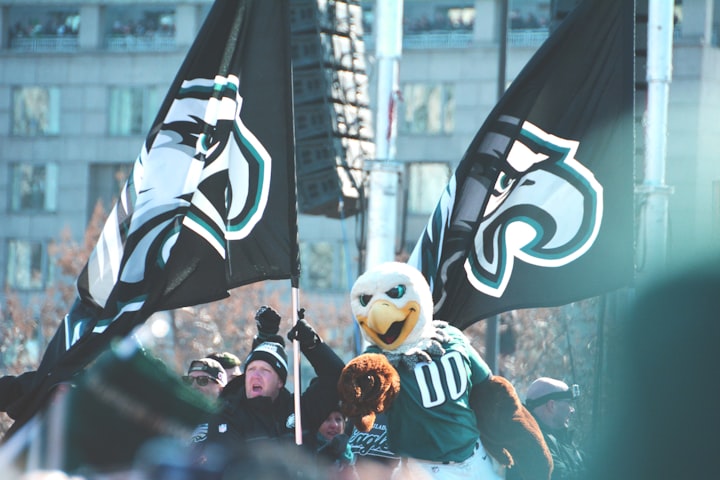College Athletics: A Review
How we finally got to the Reckoning
Listen to the podcast here!
The NCAA is a multi-billion-dollar organization. Originally founded in 1906 to save football and the integrity of collegiate sports. Most football teams were run by students and they hired players to take part. Resulting in many injuries and even death.
Football Almost Died
Football has always “almost died.” It’s survived many a hurdle, but I can’t tell if we have poor memories or simply choose to forget. Let me educate you.
According to the Chicago Tribune, there were 18 deaths and 160 crippling injuries amongst major collegiate football programs. America was in an uproar and the demands for football to be abolished at all levels were growing stronger. Which is why President Theodore Roosevelt got involved in saving the game he loved. Well, that and to further the “masculinity” of men. (Those who were quantified as men).

Over the next few years, Roosevelt would convene several meetings to discuss the rules and regulations of the sport. At first a White House meeting involving 13 colleges and universities, regulations within the game of football were carefully reviewed and underwent significant changes. Eventually leading to a reduction in deaths.
By March 31st, 1906, the Intercollegiate Athletic Association of the United States (IAAUS) which was established officially. Comprising 62 institutions became members. 4 years later, in 1910, it would evolve into the NCAA.
What was the reality of college sports back then?
Wealthy schools, all-white students and athletes being protected from their worst instinct. Attempting to avoid corruption by offering free education.
Back before there were professional sports and when a college degree held significant weight. Weight, which would improve the quality of life for you and vastly improve your family standing. The networks alone were invaluable for those who lacked mobility based upon status. Thus, the less fortunate but gifted might advance in society.
Originally, an organization to uphold the rules/legitimacy of sports. Eventually, money became in issue. Especially as players were getting crippled still. This influx of money and maintenance as the premier football entertainment in the nation had to be protected.
Following the Money
Originally, an organization to uphold the rules/legitimacy of sports. Eventually, money became in issue. Even before sponsors were getting involved, there were fans, businessmen, various boosters who were paying athletes to go to school. Which gave rise to the most useless code of conduct, the “SANITY CODE.”
World War II coincided with the creation of the “SANITY CODE”, which was aimed at curbing abuses. It failed terribly and the institutions would struggle to control member conduct. Famously, SMU received the death penalty, but we all know they were not the only school giving out money to athletes. Famously, Michael Irving once said he took a pay cut when he went to the NFL. You don’t have to go far for the rumors of players getting paid. Especially after the revelations from the Chris Dawkins scandal.
If you’re still not sure about the corruption involved with big time college athletics, there are two documentaries that will help you understand how it exploded into the beast we see today.
Movies to watch -
First, I recommend watching Sole Man. A documentary about Sonny Vaccaro, the pioneer behind major shoe deals and shoe sponsorships at the collegiate level. Which has now extended to high school, middle school and AAU. In order to win the arms race of the increasingly popular pro sports arena, the idea to sign deals with colleges gave schools more money than they even knew what to do with it.
As the arms race escalated, the need for top schools to get top players increased. Leading to the likes of Chris Dawkins. He has been painted as a villain, except he was one of the few people of color acting in the system.
Of course, the reaction to his success was led to revelations that are still impacting schools and careers to this day. In The Scheme, we discover how Christian Dawkins got involved in the world of sports. His quick rise to power and, much like the NCAA and collegiate sports itself, the efforts to stop a person of color from advancing to a position of power.
All the lies and deceit around Dawkins, the investigation eventually caught up with sizeable sums of money being distributed to colleges. $100k was the minimum going rate to get a top recruit to a top school. We also know there were larger sums, as there are recordings in the documentary of phone conversations between prominent head coaches and Dawkins. Conversations where a coach, still coaching in college sports, details how much money the recruit is asking for and lamenting that his talent did not warrant that amount.
The entire revelation resulted in some employees and coaches being fired, and then it disappeared. Besides the FBI agents stealing money during the investigation, the prime source for the investigation defrauded players and created the lie that coaches were being paid. Ironically, transferring money to players wasn’t illegal.
The NCAA rules are not laws
They got Dawkins convicted on questionable charges. He would be released and everything would be dropped. This big multi-billion dollar organization did not want the scandal revealing the operations. Especially with the biggest coaches and schools in the game because people might look deeper into how it truly operates. Including billion dollar tycoons and companies funneling money to college athletics. Definitely worth a watch for the full details.

Getting back to the origins of the NCAA
Ultimately, it was television that created an unprecedented amount of wealth for the organization.
The creation of the concept of the “Student Athlete” by Walter Byers that truly helped launch the NCAA into billions and helped them bully their way into the future with television rights.
The term “The Student Athlete.”
Former NCAA President Walter Byers admitted they crafted the term student athlete. Soon it was embedded in all NCAA rules and interpretations and led to colleges flocking into the organization for protection. If you didn’t know, the NCAA wasn’t always the prominent organization in college sports. The NIT tournament was actually more prestigious than the NCAA.
It all starts with a cheerful story. When Ray Dennison died from a head injury while playing football, his widow filed for workmen’s comp benefits. That’s right, people were still dying in football. Questions were raised whether a scholarship made the athlete an employee frightened many schools.
Universities kept ending up in court for workmen’s comp and they did not have a solid answer why these athletes were not employees. They developed the term Student Athlete. Arguing that they were students first, there to get an education and, therefore, employees second. So the primary reason for them to attend school was for an education.
It’s intentionally ambiguous. They are not “true” students (don’t care if they meet curriculum) and they are not athletes (i.e., professionals). All it had to do was pass the tests for publicity and legal reasons.
It worked. Specifically, it worked in court against TCU running back Kent Waldrep. Paralyzed, TCU refused to pay his expenses 9 months after his game against Alabama in 1974. After that decision, schools flocked over to the NCAA for legal protection for their growing business.
Side note, the dumb jock: A two-part story.
There have always been incapacitating injuries in college sports. Remember, the invention of rules and addition of equipment was never to stop head injuries specifically. It was to stop athletes from being maimed and crippled. Skulls were getting crushed. Even Roosevelt’s own son had his nose broken in a game. The same arguments we were having in the 2010s were the same arguments being had over 100 years ago.
Part One: Concussions, Brain Damage, and the worst argument for Safety in Football.
Today, we talk about brain injuries, CTE, the long-term impacts of contact sports. For those who aren’t aware, there are also significant concussions in soccer.
Women’s soccer specifically has a higher rate of concussions than football. It’s about head acceleration and in performance we are focused on increasing neck strength to reduce head acceleration to reduce the risk. Which is why some leagues of youth soccer have been banning headers.
Basically, people who haven’t been looking don’t know the truth behind the issue. Spreading false narratives and hurting true professionals from educating the public. Perhaps I could entertain your argument for changing the helmet if it wasn’t paired with a comparison to rugby. For those who don’t know, rugby has a significant amount of concussions as well.

People who don’t pay attention to a sport that’s not large in the US may not be aware of it. There are indeed studies on concussions. The issue is that it’s not a multi-billion dollar industry with enormous contracts. They don’t have the endorsement power and machine that the NFL has.
In fact, much like football before the 2000s, concussions in the sport just weren’t discussed. If you are in the field, or look up concussion rates in rugby, you’ll discover it’s not safer. You’ll also discover more prominent players admitting blacking out, not remembering games, and now long-term impacts. Hence, if you were to put in “rugby concussion rates” you’d discover articles like:
Rugby, Like the NFL, doesn’t have its concussion problem figured out.
Or,
Rugby Concussions: The Hidden Epidemic.
It’s frustrating to hear non performance individuals use rugby as an anecdote when they don’t even know the numbers. In elite-level professional games were occurring at a rate of 13.4 per 1,000 player hours. On those numbers, you would expect to see a concussion slightly more often than once in every two games.
From the Rugby Concussion Lawuit:
Currently, there is a class-action lawsuit against World Rugby, England’s Rugby Football Union (RFU) and the Welsh Rugby Union (WRU) which alleges a failure to protect them from the risks caused by concussions. (Six more former rugby players join concussion lawsuit (rte.ie)
Part Two: The Dumb Jock
This is a huge topic for me. Perhaps because, in the era of identifying issues and insensitivities, we often overlook athletes. Knowing what we know now, it’s time to end the idea of the “dumb jock.” No, we aren’t even discussing how the education fails young entertainers we call athletes. Passing them through to be someone else’s problem in the classroom and on the field, allowing them to practice wrong, potentially harmful habits. No, we are talking about making fun of brain injuries.
The term "Dumb Jock"
Some say it traces back to ancient Greece however, Plato is a name that means broad and he was a wrestler. I believe that their depiction and characterizations imply this wasn’t the prominent theory of that era. However, the idea of brains vs. brawn, or brains vs. beauty, is an ancient conversation.
Popular culture says you can’t have it all, and that undoubtedly the muscular, handsome individual is deeply flawed. Jocks are dumb, can’t remember things, have trouble completing tasks. They are aggressive, quick to violence. Drinking and partying and if you watch a movie, they aren’t afraid of trying to beat that train in a race. Now, I want you to think about something.
The following is a list of the symptoms of Chronic Traumatic Ecephalopathy (CTE)
Cognitive impairment
Difficulty thinking (cognitive impairment), Memory loss, problems with planning, organization and carrying out tasks (executive function)
Behavioral changes
Impulsive behavior, Aggression
Mood disorders
Depression or apathy, emotional instability, substance misuse, suicidal thoughts or behavior
Motor symptoms
Parkinsonism, Motor neuron disease
That’s right. The same tropes you used to deal with your own insecurities, to feel superior, or perhaps to insult athletes are the same signs of CTE.
Which has been discovered in generations of athletes who stopped playing in high school. Thus, the trope of the “dumb jock” is actually making fun of the symptoms of a traumatic brain injury. Keep that in mind when you are watching shows or making fun of people that play sports.
Let’s also not forget those who may be victims of violence at the home. Perhaps we didn’t understand the idea of those hyper-aggressive kids that struggle to learn or complete tasks. Those emotionally unstable or depressed that we see their thrill seeking as stupidity when, in fact, it may be suicidal behavior and a call for help. We aren’t even going to get into the racial component of this term just yet because we first have to understand how integration impacted college athletics.

Back to Business: The Numbers.
After winning the landmark lawsuit, the NCAA was officially in charge of college athletics. This came with an influx of money and responsibility. Offering an opportunity to expand and hire a full-time staff. Walter Byers himself would say that the NCAA as currently made up is a “nationwide money laundering scheme.” As it stands, it is one of the most profitable businesses in the land with 1,117 universities and colleges, 100 conferences, 40 affiliated sports organizations and 90 championships.
As a business model, the NCAA operates as a non-profit. Meaning that they are tax exempt. This model is largely based on a working population of young men and women who are considered “amateur.” In just the sport of basketball itself, the NCAA signed a multi-billion dollar deal valued at $19.6 billion dollars. Originally signed in 2010, the current structure pays the NCAA over $1 billion per year.
This only includes the March Madness Tournament.
It does not include the media rights or the ticket sales. Like most charities, the NCAA states that 90% of that money will go back to helping student athletes. Of course, they include money paid for services the school never follows through on. Which include but aren’t limited to clothing and trips for unexpected funerals.
Even with that accounted for, in the NCAA tournament alone, they bring in $800 million. A significant amount for any organization to consider itself successful. Add on to that the NCAA football championship. According to CBS sports, it is currently valued at $5.64 billion just for the championships. This means that they will bring in an additional $470 million dollars off their playoff series. It equates to only $1.27 billion dollars for their championship games alone.
Let’s not forget, in the COVID SEASON, they provided horrid conditions for the women’s tournament, despite the millions in television revenue it generates.
Now consider how their member organizations operate. Most non-profits operate in the red. Meaning that they are spending more than they are making. They all share revenue through their conference. For instance, after this past season, the COVID SEASON, major conferences gave out over $20 million dollars to each university in their respective conferences. Which was based on “expected future revenues from TV deals.”
Each university is free to gain additional sponsorships and even television deals. Many have joined NBC, CBS, FOX, and ESPN networks with exclusive access deals. Smaller institutions and universities can use local access networks. As part of their model, these institutions must also operate in the red. This model helps the narrative that this non-profit deserves to maintain its status. In order to avoid further scrutiny from external sources, member schools immediately dedicate additional funds back into their program.
“College sports is big business, and it’s a poorly run big business,” said David Ridpath, a business professor at Ohio University and board member for the Drake Group, a nonprofit advocating for an overhaul of commercialized college sports.
“It’s frustrating to see universities, especially public ones, pleading poverty… and it is morally wrong for schools bringing in millions extra on athletics to continue to charge students and academics to support programs that, with a little of fiscal sense, could turn profits or at least break even.”
Integration
Which is interesting, considering that schools in the south at the highest levels have just integrated their football fields. It began shortly after World War II. It’s almost 50 years since the infamous USC v Bama game which USC won 42-21. Which is fascinating considering:
- It wasn’t until the 1960s that most major schools in the south would even allow/be allowed to play teams with black players.
- It wasn’t until the 50s and 60s that you had major programs competing in the postseason with all black rosters.
- Only 3 black players were allowed for starters at a time as part of a “Gentleman’s agreement.”
- John Wooden famously took a stand in the late 1940s by refusing to play in the postseason without his black athletes and then forcing their involvement in the postseason in 1948.
Meaning that any relative 60 years of age or older was alive and may even remember when blacks weren’t allowed to play football everywhere in the country. It’s not that long ago and yet we make it seem like ancient history. Once you understand how the hustle evolved, it's extremely relevant, as colleges worked to keep money away from the athletes as sports became more integrated. Again, money on the books but not off the books and behind closed doors. Another sign that despite the rhetoric everyone understands the value of these entertainers.
The Hustle
NCAA and member institutions routinely operate in the red. Their model allows them to spend money with reckless abandon. In most models, this is irresponsible. With many revenue streams and increased television deals, revenue is endless. Any revenue gained is immediately spent on operation costs.
These additional costs require additional fees. They can increase prices for tickets, jerseys, parking, alumni costs, alumni donations requirements, and the costs of attending the university. All their expenses can be billed into the university. All while accumulating grants from the NCAA for being a member. Besides the revenue, they can gain sponsorships for themselves as an institution locally and nationally. In the end, it’s a giant circle of revenue sharing all from under the NCAA umbrella.
The NCAA has control over the sports landscape. They receive money from allowing the universities to take part in sport, take part in championships, and broadcasts on any media. They sign multi-billion dollar deals for the championships alone. This money gets dispersed amongst their members to help pay for operational costs. The same costs that are imposed on the student body and members of the state depending on the funding of the university.
Recently, this has changed. With landmark legal cases won in court, it spells the end for the modern era of the NCAA. Thanks largely to Ed OBannon and Sonny V, players will make money in college, especially after gaining their NIL. That is the rights to their name, image, and likeness. We can’t forget that the NCAA used prominent athletes like Johnny Manziel on their websites to sell tickets. LSU used Ben Simmons as a landing page once he signed to the school to sell tickets. Now, players are free to make a profit which extends to the high school athlete. A major step towards correcting a travesty of a system.

Add a free labor force with essential needs also covered by both the state, student body, and NCAA. A labor force with million dollar talent they can profit off of for free. A labor force that can essentially earn the conference and university an even larger share of the NCAA revenue.
Revenue, which increases year to year from sponsors, advertisers, and media. With targeted marketing, it is a gold mine. Advertisers can gain loyal fan bases by targeting strategic member institutions. Allowing them to eliminate competition from those arenas for a hefty fee. That kind of direct marketing access and publicity increases in value every year. All of this based on amateur athletics run by a non-profit organization.
How COVID Destroyed the Myth and Revealed the Truth Behind College Athletics
Many subjects discussed today deserve an article of their own. Today, we’re just going to wrap it up neatly for those who maybe didn’t hear everything clearly. The Myth of college athletics is that it costs much more to run than they make. There is no money.
Despite the spas, and the million dollar upgrades to a year old stadium, college coaches making more than pro coaches, there’s no way it’s profitable. No money left for the athletes. Which is strange considering even back to when Penn State faced sanctions, they immediately put out documents discussing the economic impact of not having football.
Penn State football sanctions will hurt Centre County’s economic engine -
- Stating that it generates $50 million for Centre County back then and we know the contracts have become more lucrative.
- Without football, PSU athletics would be at a loss of $29.1 million instead of a surplus of $14.8 million.
However, that’s not the most damning evidence.

As colleges shut down because of the pandemic, they sent students home. Minimized their staffs and under emergency clauses they even cut faculty members with tenure. They eliminated sports programs like wrestling, soccer, and cross-country.
College sports cuts in the wake of Covid-19 are clouding the future of Olympics participation and College Sports Programs Cut Because of Coronavirus Pandemic. A group of schools petitions to minimize the number of sports required to be D1 for four years so they could absorb the costs. NCAA conferences ask for relief on Division I requirements.
Yet, isn’t it bizarre that you’re so scared of an outbreak on campus, the legal liabilities associated with it you send every kid home except for the entertainers of “money” sports?
You’re cutting programs that are insignificant to your budget, yet you keep the most expensive ones on campus? The one with an enormous amount of players like football. Oh, and let’s not forget that you’re keeping the most expensive coaching salaries on your budget as well, while releasing faculty members to “cut costs.”
Still, it gets better. Besides putting these young entertainers at risk for future health implications, you also asked to stop paying for other sports. Why would they ask to cut these sports? Because in reality it is the money sports that pay for those other sports. Which is where we can get into the truth about athletics.
As sports became integrated and team sizes became limited, that meant major universities couldn’t just offer anyone a scholarship. To compete you have to get the best talent and that’s primarily black athletes in money sports. The sports that are idolized, put on TV, and celebrated more than life itself in some parts of this country.
Remember, these schools used to be a place for those without privilege to gain an education. There was nowhere else for them to go.
If you were from a modest family, perhaps you could get a scholarship on the football team and further your education. With integration, now those spots are gone. What happens to the privileged kids, or white kids who would benefit from that system? Well, most sports. It solves two problems. One, there’s no money in the budget, so you’re not profitable. You’re in the red because you’ve opened up a cross-country team, a tennis team, a soccer team. Sports that traditionally have a smaller portion of minority participants. Now, you get to offer free education to a predominantly white population while taking money away from the entertainers who make that money.
The COVID season ended that façade.
Schools were ready to cut the fat and dump all their money into the sport that “costs them more than it makes.”
All these business people, all these academics, decide to keep their highest costs for the “sake of the game?” Hell no.
We know it makes them money. It makes the town money, makes the campus money and drives applications. Offering revenue sharing and, of course, they have so much money tied into sponsors that they would not hesitate to put athletes at risk. They’re supposed to be educating them and advocate for in-person classes, yet fired their best faculty and gave them computers.
As the money flooded in, the importance of educating the athletes stopped. Even as the colleges today are a for-profit business model, they don’t even work hard to educate the undergrads, anyway. Having a bachelor’s degree today is like having a high school diploma. If you can afford to pay for one, they’ll give you one.
Consider that those teams from say, the areas that resisted integration, what was the incentive to educate their athletes. To offer upward mobility, that’s a risk to the racists’ model and structure. Thus, to bring them in to school, promise to take care of them while they performed, many schools did not emphasis or even provide a proper structure for education. Enabling them to get the athlete to sacrifice their career for the million or billion dollar program and they were never empowered through education. Further perpetuating stereotypes and actual inequalities.

College Admission Scandal
The college admission scandal was so revealing. Parents making up resumes for non-money making sports to get their privileged kids into prestigious schools. Kids that shouldn’t be there and some that didn’t even want to be there.
When people ask why, it’s so simple for me. Nepotism and Cronyism.
Basically, that privileged kid will continue to get passed through school just like the underprivileged athlete. The difference being that the privileged individual, who may not have any discernable talents, will eventually be able to gain a job based on their family and friends. When you see wealthy heir get a job running a marketing firm, makeup line, or launching a franchise, it obvious how they got their position.
However, if they have that degree from a prestigious university, they have some cover. That’s when you’ll hear “what people don’t know is that they studied blank at blank university. They’ve been around and helped with the company for years.” The same system that was gamed to allow athletes into a university and deny them an education is the same one wealthy people used to allow average students into the same universities without the intent of forcing them to be educated either.

At least it’s we’re finally headed in the right direction.
Of course, I’ve always held my belief about how to fix the situation. The evolution of the NCAA, if it even still exists and operates under that name, should be a reclassification of the student athletes.
There should be athletes and students athletes.
The athlete is just like a coach. They are a mercenary hired for their skills, can leave the school when the season is over with no penalties, and do not have to attend classes. However, for every year they stay at a university, they are offered a year of attendance that is transferable. Meaning they can offer their parent, sibling, cousin, spouse, or even their child those years. Actually benefiting from the education system.
Now, they will be on the hook for the tuition costs. Codes of conduct, financial planning classes and have to get bills in their name and pay for room and board. How? Well, the school can only offer the student athlete the costs of tuition. Meaning that if you’re in-state or out-of-state, that is the maximum compensation you can offer. Now, if you want to offer room and board, you can as a perk but you can only have 1/3 of your roster be composed of athletes. For football, that’s around 20 athletes and for basketball, that’s 5.

The rest will be student-athletes. A student athlete does not receive compensation from the school, but their education is the priority over sport. If they require time for a class, a test, or internship, it will take priority. They can still benefit from their NIL. Of course, a student athlete can transition to an athlete. If they do, they are required to cover the costs of their education. The only way an athlete can convert into a student athlete is through injury.
This could be the best way forward. Empowering the labor force, the talent, and holding the adults responsible as well. Without it, that’s how you get the Pitinos, the Urban Meyers, and the Jon Grudens. Which will be my next topic, discussing the Frat Boy Culture that permeates through the billion dollar sports industry. How it cannot survive nor hide in today’s society.
Short on time? Here's a link to my library of podcasts.
About the Creator
Blake A Swan
NCSA Strength and Conditioning Professional certified as a CSCS, TSAC-F, and CPT. I have my FMS Certification as well, and spent over a decade working with athletes in various sports. Including youth, high school, college, Olympic and Pro.








Comments
There are no comments for this story
Be the first to respond and start the conversation.